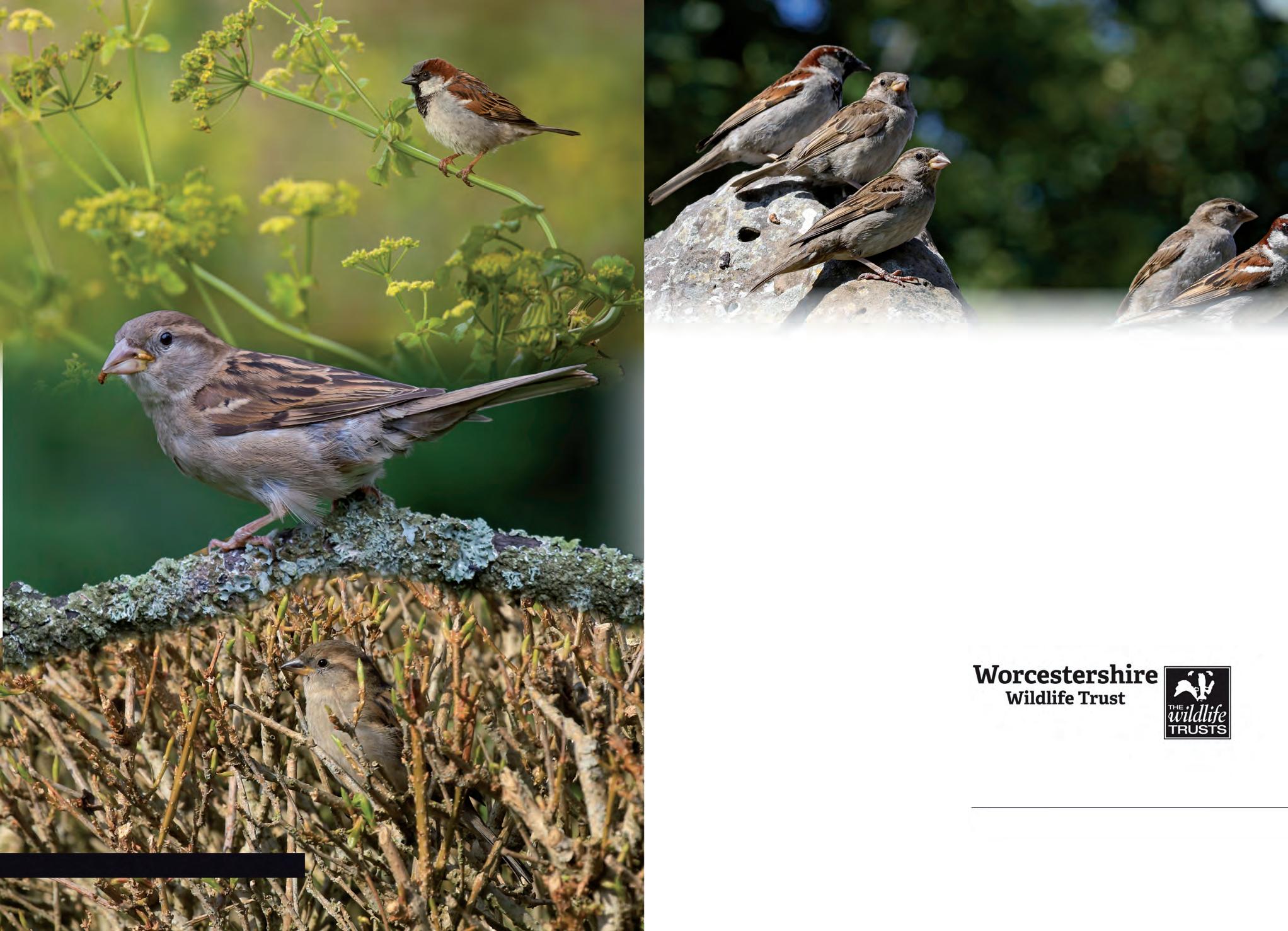
2 minute read
Worcs Wildlife Trust
Humble house sparrows
Whilst planning and researching content for this year’s 30 Days Wild, which takes place throughout June, I learnt a new word – syanthropic. Syanthropic species are those that have adapted to living close to humans. I can think of no more obvious example than house sparrows – the clue is even in their name!
Advertisement
House sparrows have lived alongside us in the UK for thousands of years, benefitting from nesting under our eaves and feeding from our fields and scraps. However, as our use of land has intensified and we’ve tidied our farms, gardens and buildings, we’ve pushed away our sociable feathered friends. Since 1977 there has been an estimated 71% decline in house sparrows across the UK and that drop in population is reflected here in Worcestershire.
Before 1980, the occurrence of house sparrows across our county was so common that most people who recorded birds didn’t think they were worth mentioning. Nowadays, we’re often contacted by people wondering why the constant chattering of their feathered neighbours has fallen silent. Records of house sparrows in 2020 showed a preference for urban fringes and in suburban areas rather than Worcestershire’s villages where we’d also expect to find them. Is this is a true picture or does it reflect only where bird recorders happen to live?
We need you - a horde of citizen scientists to let us know where Worcestershire’s house sparrows are. Whether you’re in the middle of town, the edge of Sanders Park, on a suburban estate or out in a village, we’d love you to keep an eye out for house sparrows. If you spy some, snap a picture and submit it to us using the short form on our website
www.worcswildlifetrust.co.uk/wildlifesightings
House sparrows favour gardens that are connected to other gardens via superhighways of hedgerows, large shrubs and trees. They love their own neighbourhoods and rarely stray more than a 2km radius for their entire lives – if you lose a colony, it can take a very long time before they’re replaced. Take a closer look at their beaks for a hint of what they like to eat – those chunky bills are great for breaking through the shells of seeds. They won’t just be coming to your garden feeders, though – natural habitats like walls of ivy, thick hedges and even flower borders will supply them with insects to feed to their growing young.
June is a great time to take a closer look at the wildlife around you. Sign up to take part in 30 Days Wild www.wildlifetrusts.org/30DaysWild and challenge yourself to do something a little wild every day of the month, starting with a Big Wild Breakfast on 1st June.

Keep up to date with us:
www.worcswildlifetrust.co.uk
Find us on Facebook www.facebook.com/worcestershirewildlifetrust Follow us on Twitter @WorcsWT
Watch us on YouTube www.youtube.com/c/WorcswildlifetrustUK1
Photos:
Opposite page: Top: House sparrow male by Mark Hamblin 2020VISION Middle: House sparrow female by Lesley Betts Bottom: House sparrow female by Peter Hawcroft This page: House sparrows by Wendy Carter










